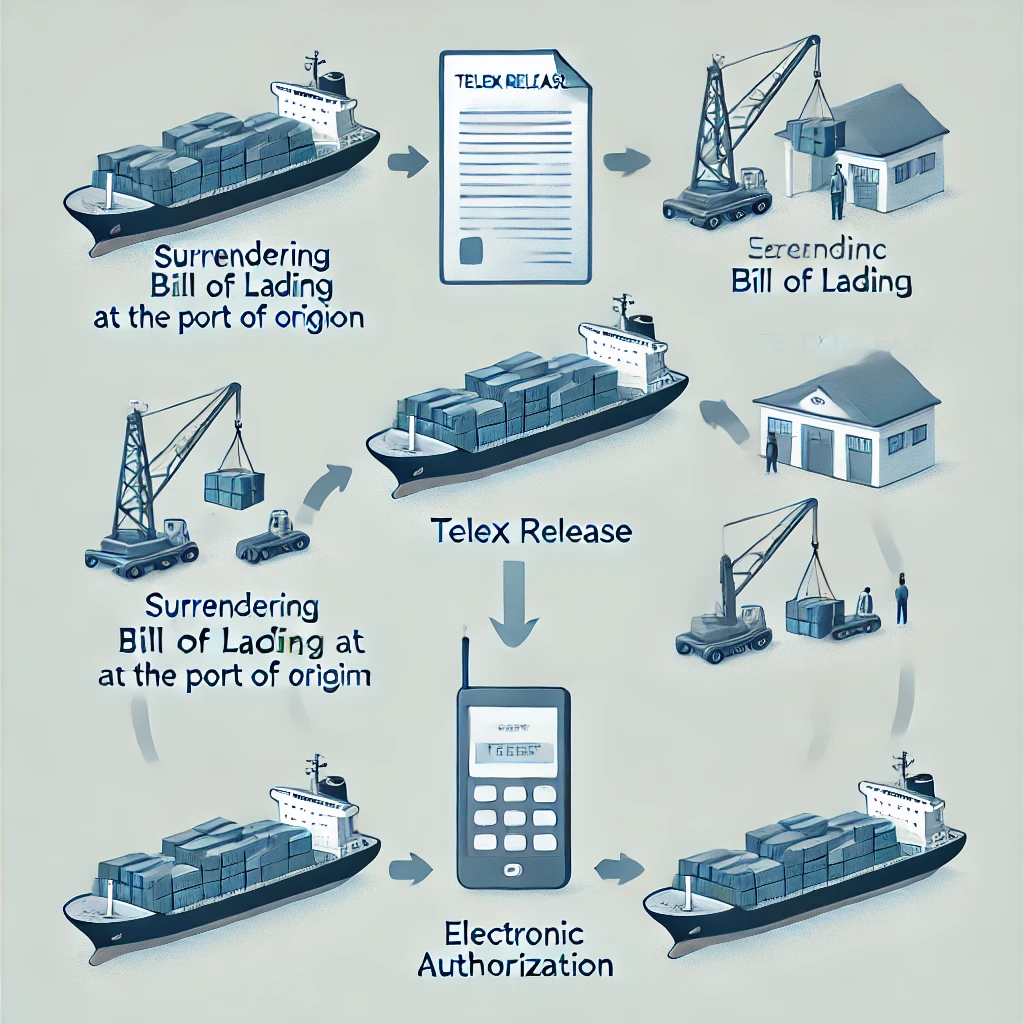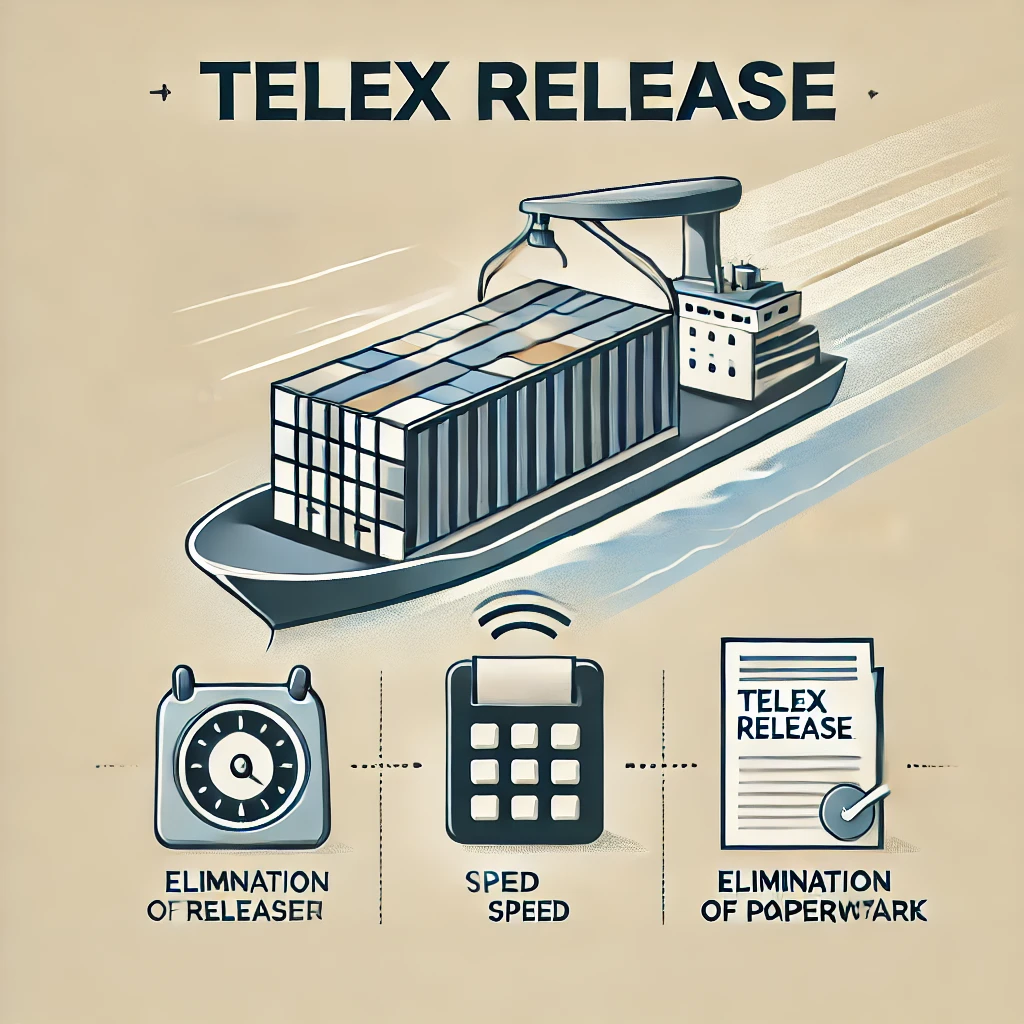Telex Release: The Comprehensive Guide to Electronic Bill of Lading Release in Shipping
What is a Telex Release?
A telex release, despite its somewhat outdated name, is a modern electronic method used in shipping to cargo at the destination port without the need for the original paper bill of lading. But to fully understand telex release, let’s break it down:
Telex Release Definition
A telex release is an electronic message sent by the shipping line at the port of origin to their agent or office at the destination port, authorizing the release of cargo to the consignee without presenting the original bill of lading.
Telex Release Meaning in Shipping
In shipping terms, a telex release essentially means that the shipper has surrendered the original bills of lading to the shipping line at the origin, and the line has electronically notified their counterparts at the destination that it’s safe to release the cargo without collecting the original document.
The Importance of Telex Release in Modern Shipping
Understanding the significance of telex release is crucial for anyone involved in international trade:
- Speed: Eliminates delays caused by waiting for physical documents to arrive.
- Cost-Effective: Reduces courier costs for sending original documents.
- Reduced Risk: Minimizes the risk of lost or damaged bills of lading.
- Flexibility: Allows for last-minute changes in cargo ownership or destination.
- Environmentally Friendly: Reduces paper usage, supporting sustainability efforts.
Telex Release vs. Original Bill of Lading
To appreciate the value of telex release, it’s essential to compare it with the traditional process using an original bill of lading:
Telex Release | Original Bill of Lading |
Electronic process | Paper-based document |
Instant transmission | Physical courier required |
No risk of loss in transit | Can be lost or damaged |
Allows immediate cargo release | May cause delays in cargo release |
Cost-effective | Additional courier costs |
How Telex Release Works
The process of a telex release typically involves the following steps:
- Surrender of Original B/L: The shipper surrenders the original bills of lading to the shipping line at the origin port.
- Request for Telex Release: The shipper requests a from the shipping line.
- Verification: The shipping line verifies the request and confirms payment of all charges.
- Electronic Notification: The shipping line sends an electronic message () to their agent at the destination port.
- Cargo Release: The agent at the destination authorizes the release of cargo to the consignee without requiring the original bill of lading.
Telex Release Bill of Lading: Key Considerations
When dealing with a telex release bill of lading, keep in mind:
- Security: Ensure proper verification processes are in place to prevent fraud.
- Timing: Request as soon as possible to avoid delays.
- Charges: Be aware of any additional fees for services.
- Documentation: Maintain clear records of all communications regarding.
- Legal Implications: Understand the legal standing of in different jurisdictions.
Advantages of Telex Release
The benefits of using telex release in shipping are numerous:
- Faster Cargo Release: Eliminates waiting time for original documents to arrive.
- Cost Savings: Reduces or eliminates courier fees for document transmission.
- Increased Flexibility: Allows for changes in cargo ownership even while goods are in transit.
- Reduced Risk of Fraud: Electronic process can be more secure than paper documents.
- Improved Cash Flow: Faster release can mean quicker payment for sellers.
- Environmental Benefits: Reduces paper usage and associated environmental impacts.
Challenges and Considerations
While telex release offers many benefits, there are also challenges to consider:
- Technology Dependence: Relies on electronic systems which can be vulnerable to technical issues.
- Legal Recognition: Not all jurisdictions fully recognize electronic releases.
- Security Concerns: Potential for electronic fraud or hacking.
- Training Requirements: Staff need to be trained in new procedures.
- Cost of Implementation: Initial setup of electronic systems can be costly.

Telex Release vs. Express Release
It’s important to distinguish between telex release and express release:
Telex Release:
- Involves surrendering original B/L at origin
- Requires specific request and authorization
- Used when original B/L has been issued
Express Release:
- No original B/L is issued
- Agreed upon at the time of booking
- Cargo is automatically released upon arrival
Both methods aim to expedite cargo release, but they’re used in different circumstances.
Legal Aspects of Telex Release
Understanding the legal implications is crucial:
- Jurisdiction Variations: Legal standing can vary between countries.
- Liability: Clarify who bears responsibility if goods are wrongly released.
- Evidence: Electronic messages may need to meet specific criteria to be legally admissible.
- International Regulations: Be aware of international maritime law regarding electronic releases.
Best Practices for Using Telex Release
To make the most of telex release:
- Clear Communication: Ensure all parties understand the process and their responsibilities.
- Timely Action: Request telex release as soon as possible after shipment.
- Verify Details: Double-check all information before requesting.
- Secure Systems: Use robust, secure electronic systems for requests and authorizations.
- Document Everything: Keep clear records of all communications and authorizations.
- Stay Informed: Keep up-to-date with changes in regulations and best practices.
The Future of Telex Release
As technology continues to evolve, so too will the concept of telex release:
- Blockchain Integration: Increased use of blockchain for secure, transparent releases.
- AI and Machine Learning: Automated verification and fraud detection systems.
- Global Standardization: Move towards internationally standardized electronic release processes.
- Mobile Applications: Increased use of mobile apps for managing releases on-the-go.
- Integration with IoT: Linking release authorization with real-time cargo tracking.
Telex Release and Digital Transformation in Shipping
Is part of a broader digital transformation in the shipping industry:
- Paperless Trade: Move towards fully digital documentation.
- Real-time Tracking: Integration with advanced cargo tracking systems.
- Data Analytics: Using release data for predictive analytics and process optimization.
- Customer Experience: Improved interfaces for shippers and consignees to manage releases.

How to Implement in Your Shipping Operations
For businesses looking to implement telex release:
- Assess Current Processes: Identify areas where telex release can improve efficiency.
- Choose the Right Technology: Select secure, reliable systems for managing electronic releases.
- Train Staff: Ensure all relevant personnel understand the new processes.
- Start Small: Begin with a pilot program before full implementation.
- Monitor and Adjust: Continuously evaluate the effectiveness in your operations.
Supply Chain Visibility
Telex release contributes significantly to improved supply chain visibility:
- Real-time Updates: Provides immediate information on cargo release status.
- Integration with TMS: Can be integrated with Transportation Management Systems for comprehensive oversight.
- Data Insights: Offers valuable data for analyzing and optimizing supply chain processes.
Conclusion
Telex release represents a significant advancement in streamlining international shipping processes. By eliminating the need for physical bills of lading at the destination, it offers faster, more cost-effective, and more flexible cargo release options.
While challenges exist, particularly in terms of technology adoption and legal considerations, the benefits of far outweigh the drawbacks for most shipping operations. As the shipping industry continues to digitalize, understanding and effectively implementing will be crucial for staying competitive in the global marketplace.
Whether you’re a seasoned logistics professional or new to international shipping, mastering the use of telex release can significantly enhance your shipping efficiency and customer satisfaction. By staying informed about best practices and future trends, you can ensure that your business remains at the forefront of shipping innovation.
Remember, in the fast-paced world of international trade, every efficiency gain counts. is more than just a time-saver; it’s a gateway to smarter, more responsive, and more sustainable shipping practices.
